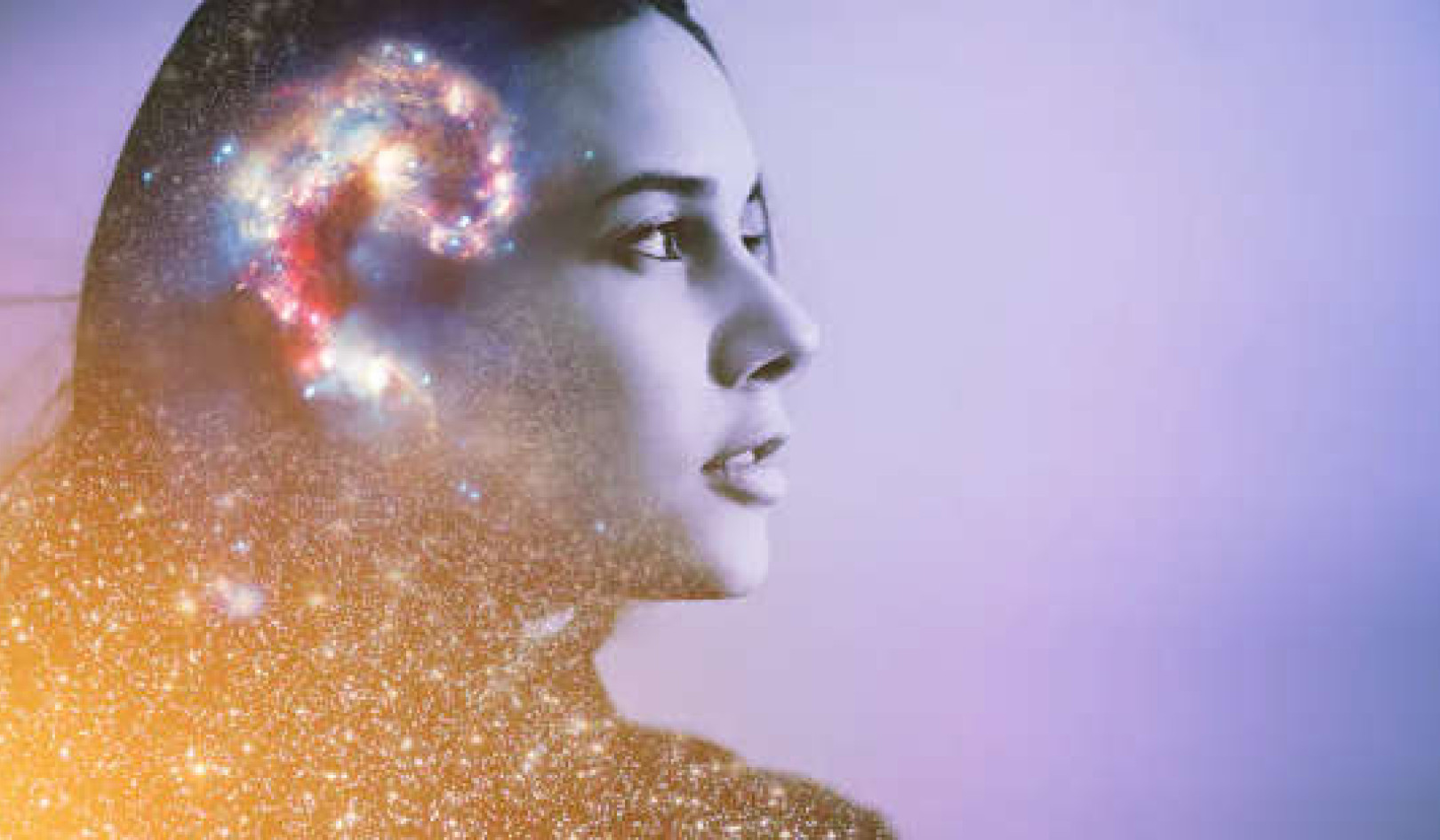 You are on holiday with your partner of several years. Your relationship is going pretty well, but you wonder if it could be better. It’s Valentine’s Day and you find a bottle on the beach. You rub it. A love genie appears. He (or she) will grant you three special Valentine wishes. Here are some of your choices:
You are on holiday with your partner of several years. Your relationship is going pretty well, but you wonder if it could be better. It’s Valentine’s Day and you find a bottle on the beach. You rub it. A love genie appears. He (or she) will grant you three special Valentine wishes. Here are some of your choices:
-
to have more or less sexual desire (lust);
-
to remain always as “in love” as you were when you first fell in love (romantic attraction);
-
to be more or less bonded to your partner emotionally (attachment);
-
to be (happily) monogamous or polygamous.
What would you choose? What should you choose? What would your partner choose? Would you choose together, if you could? What would you choose for your partner?
A real-life love genie in a bottle
In August 2015, the US Food and Drug Administration (FDA) approved the first drug to specifically increase sexual desire. While not yet available from doctors in Australia, it is available on the internet. Flibanserin or “Addyi” is used to “treat” hypoactive sexual desire disorder (HSDD), or low libido, in premenopausal women.
Addyi acts on neurotransmitter receptors in the brain (serotonin receptors – the same receptors targeted by some antidepressants like Prozac which themselves lower libido). The beneficial effects are modest. Prior to treatment, these women experienced about two or three satisfying sexual events over a month. After a course, they got around one extra sexually rewarding experience a month, though in some individual cases the effects would have been greater.
Addyi faces considerable opposition. People worry it is treating the symptom, not the disease, which is social or relationship dysfunction. There is concern it could be used coercively in abusive relations, and finally that it reflects an unrealistic standard of hypersexuality promoted by media and pornography.
These are all legitimate concerns. But what motivated the FDA is that some women experience low sex drive, which causes them distress. This can help them.
Addyi is the first of many designer “love drugs” aimed strategically at targeting a specific phase of the human romantic relationships.
What is love?
Love and mating are the most basic, biologically programmed behaviours humans engage in. Evolution created life, including human life, as a reproductive machine designed to pass on genes to the next generation.
Human love is a set of basic brain systems for the three stages of love (lust, romantic attraction and attachment) that have evolved among all mammals.
Lust promotes mating with any appropriate partner, attraction makes us choose and prefer a particular partner, and attachment allows pairs to co-operate and stay together until our parental duties have been completed. Each of these different phases occurs in different parts of the brain and is mediated by different hormones and neurotransmitters.
Do we need love drugs?
In evolutionary time, 300,000 years is a blink of an eye. That is how long our species has been in existence. Our wiring is essentially the same as our hunter gather ancestors. And when it comes to mating behaviour, we are very similar to other mammals.
Yet in the last 10,000 years our societies have radically changed under the influence of agriculture, urbanisation and property ownership. Institutions have been invented to facilitate living in large groups and ownership of property. Marriage and fidelity to one partner is one such institution. It fulfils emotional needs and provides socioeconomic security. It enables transfer of property, protects against sexually transmitted diseases, and enables rearing of young.
But under the influence of science and technology, particularly the industrial revolution, our lives have changed radically.
Marriage for love is a relatively recent phenomenon. Families and relationships are changing. Around 50% of marriages end in divorce. Divorce has surpassed death as the major cause of relationship break up. Children often grow up in “blended” families. Gay or single people have children. People seek deeply loving, all-consuming or highly sexualised relationships. Diversity is celebrated. We can have partners of the opposite, same or both sexes. And we are richer than ever before, seeking relationships for love, not socioeconomic reasons.
But our biology has lagged behind our social and cultural evolution – we still have the biology and drives of our hunter-gatherer ancestors. We are not made for the world and institutions we have created for ourselves, including lifelong marriage.
Through most of human history, people lived only 20 to 35 years. There were high risks of death from giving birth, violence, accidents and disease. Most marriages ended by one of the partners dying. Given a life expectancy on the order of 30 years and marriage in the teens, at least 50% of marriages would have ended within 15 years, usually due to the death of one of the partners. This is surprisingly close to the current median duration of marriage of about 11 years.
Put simply, relationships have not evolved to last much more than about ten years.
So should we design love? Love and relationships are some of the most potent contributors to our well-being, and our children’s well-being. There are strong prudential and moral reasons to make our relationships better, to escape evolution’s chains.
But won’t this render our relationships inauthentic, the mere product of pharmaceutical design? Won’t we become addicted to love? Couldn’t this be used to imprison people in bad relationships they would be better released from? Isn’t it better to change institutions or people using counselling and therapy?
Evolution has not created us to be happy, but rather happiness to keep us alive and reproducing. But from our human perspective our – and our loved ones’ – happiness and flourishing are the primary goals. There is no human moral imperative to obey evolution.
Yet evolution has constructed our motivational systems and emotions, making any ethics or social system that goes counter to these constraints unstable. Our evolutionary adaptations are based on an ancestral environment utterly unlike our present, and some adaptations promote competitiveness and unhappiness rather than happiness.
Chemical and other biological manipulation of our emotions is a way to circumvent this bind, allowing human desires and value to influence our underlying biology.
This represents an important move towards “biological liberation” or bioliberation. That is, to us being liberated from the biological and genetic constraints evolution placed on us and that now represent impediments to us achieving a good life or other valued goals.
Making choices
There is no free lunch in life. In the case of Addyi, the key question the FDA considered was whether the benefits outweighed the side effects of the drug.
Some 21% of women taking it experienced central nervous system “depression” (fatigue, somnolence or sedation) while 11% experienced dizziness, somnolence or nausea. There was also the risk of fainting, accidental injury, and depression, as well as potential adverse interactions with alcohol and common medications, including antidepressants (SSRIs) and hormonal contraceptives.
People need to be informed of these risks, and monitored for them. But, in the end, it is they who should decide if the risks outweigh the benefits when they are paying for the drug.
An ethical toolkit
There are several key ethical points.
Everything that matters in our lives is the result of what goes on in our brain. These operations are not entirely mysterious – they are the result of neurotransmitters like serotonin being released, causing electrical messages across neurons that translate into thoughts, desires, feelings and action.
The operations of the brain can be modified by environmental, including social, stimuli and direct stimulation of the brain by drugs, electrical or magnetic current (so called brain stimulation).
More complex higher-order experiences and actions, like playing football or being in love, cannot at present be simulated by direct brain stimulation. They require a combination of engagement, action and sometimes biological assistance. It is a platitude that steroids will do nothing if you sit on the couch – you have to train hard and steroids only work by accelerating healing after training.
Love drugs require the right kind of engagement, so the fear that these undermine something essential to love is misplaced. They help love along – but they don’t at this stage create it or simulate it. They change the probabilities; they don’t determine the outcome.
Free will is to a considerable extent an illusion. Results from psychology and neuroscience show that many of our choices which we experience as free are shaped by unconscious factors, driven by social and environmental cues. For example, the longer you look at someone, the more you will find them attractive.
Paradoxically, love drugs can enable freedom and allow us to make decisions, such as breaking up with a partner. They allow us some cognitive control over our most basic drives, which are so prone to factors outside of our control.
You can’t just will yourself to be attracted, to have sexual desire or to be in love. But love drugs can increase the probably of those events occurring, in the right context.
In this way, love drugs are liberating, or at least can be. Like any powerful technology, they can be used for good or bad. Given against someone’s will, they could undermine that person’s choices and freedom. They could be used for abuse.
It is essential that as freedom increases, we form rules. That is the problem we are facing now with the freedom afforded by the internet – there are no rules, not even social norms. It is the Wild West.
So, here are a few starter rules for dealing with the genie in the bottle:
-
Actively decide for yourself. Take a stand. There is no recipe or answer which is right for everyone.
-
Work out what you and your partner think is a good relationship (and that is up to you) and don’t be pressured by others' values or norms. Long- or short-term relationship, children or no children, monogamy or polygamy. Use the knowledge of human psychology, sociology and biology to achieve these, including in the future, designer love drugs.
-
Know the downsides of what you are doing and minimise these.
-
There is danger that we will end up medicated to live; there is also danger we will accept disadvantage of natural inequality and our natural limitations and use drugs to support these rather than seek a better future.
-
Don’t sacrifice other values unreasonably for love – health, family, job. Monitor the effect of enhanced love on these other values.
-
Do it together, according to agreed relationship goals.
-
Reassess, talk and revise goals and use.
It’s time to design your own life.
About The Author
![]()
 Julian Savulescu, Sir Louis Matheson Distinguishing Visiting Professor at Monash University, Uehiro Professor of Practical Ethics, University of Oxford. He is engaged in research, education and stimulating open discussion around the ethical issues arising in everyday life.
Julian Savulescu, Sir Louis Matheson Distinguishing Visiting Professor at Monash University, Uehiro Professor of Practical Ethics, University of Oxford. He is engaged in research, education and stimulating open discussion around the ethical issues arising in everyday life.
This article was originally published on The Conversation. Read the original article.
Related Books
at InnerSelf Market and Amazon

























